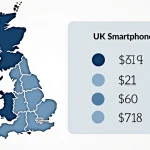Actionable strategies for UK companies to implement gamification
When integrating gamification UK strategies, understanding its core principles is essential for boosting customer interaction UK. Gamification revolves around applying game design elements—such as points, levels, and rewards—to non-game contexts to motivate and engage users more effectively. This approach taps into human psychology, encouraging participation and loyalty through challenge, achievement, and competition frameworks.
To implement effective gamification strategies in UK businesses, companies should start by clearly defining their engagement goals, whether increasing customer retention, fostering brand loyalty, or educating users about products. A practical step is designing a system of rewards aligned with customer preferences and cultural nuances in the UK market. This can include personalized offers, exclusive access, or social recognition opportunities, which resonate well with UK consumers.
This might interest you : How Can UK Computing Trends Influence Effective Marketing Strategies?
Another actionable step involves leveraging technology platforms that support gamification features while ensuring compliance with UK regulations, especially concerning data protection and privacy. Testing and iteratively refining these platforms can prevent common pitfalls and tailor the experience to customer behaviors observed in the UK context.
UK companies often face unique initial challenges when applying gamification, such as varying regional preferences and skepticism toward marketing tactics perceived as gimmicks. These issues can be addressed by thorough market research, transparent communication, and involving customers in co-creating gamified experiences. This increases buy-in and reduces resistance.
This might interest you : How is the UK marketing landscape evolving with the rise of voice search technology?
Focusing on these actionable steps within gamification UK frameworks will help businesses enhance meaningful customer interaction UK and maximize their strategic outcomes.
Effectiveness of gamification in customer engagement
Gamification benefits are increasingly recognized as powerful tools to boost customer engagement across various sectors, especially within the UK market. By integrating game-like elements—such as points, badges, and leaderboards—businesses tap into intrinsic motivation drivers that make interactions more enjoyable and rewarding for customers. This motivates users not only to initiate contact but also to sustain long-term loyalty.
The behavioural psychology behind successful gamification techniques lies primarily in the principles of reinforcement and goal-setting. When customers receive immediate feedback and rewards for their actions, dopamine release is triggered, reinforcing the behaviour and promoting repetition. In the UK market, these principles are adapted to meet cultural preferences, emphasizing community competition and personal achievement, which encourage participation and sharing.
Data trends from recent UK market insights consistently show that gamification enhances customer interaction metrics. For example, businesses that implemented gamified loyalty programs have observed a measurable increase in repeat visits and higher average transaction values. The combination of psychological incentives and social engagement elements creates an immersive experience that converts casual users into active brand advocates, proving the tangible importance of gamification benefits in customer engagement strategies.
Real-life UK case studies and examples
In the UK, gamification examples abound across various industries, illustrating how integrating game-like elements can boost customer loyalty and engagement. One standout instance is a major UK retailer that incorporated a points-based rewards system into its mobile app. Customers earned points for every purchase, which could be redeemed for discounts or exclusive offers. This approach led to a measurable increase in repeat purchases and app usage, demonstrating the power of gamification to drive consumer behavior.
Another noteworthy case involves a British bank that introduced a financial education platform using gamified quizzes and challenges. Customers who actively participated gained badges and climbed leaderboards, incentivizing continuous learning about personal finance. The bank reported a significant uplift in customer satisfaction scores and more consistent interaction with its digital services. This example highlights how gamification can enhance both education and engagement simultaneously.
These UK gamification examples reveal important lessons. First, ensuring the game mechanics align with business objectives is critical for meaningful results. Second, transparency about rewards and achievable goals maintains customer trust and motivation. Finally, continuous iteration based on user feedback optimizes the gamification strategy over time. Companies embracing these principles have seen tangible improvements in customer loyalty UK and overall brand affinity.
Steps to integrate gamification into UK business processes
Integrating gamification into business processes UK starts with clearly identifying your core business goals. This alignment ensures gamification objectives directly support what you want to achieve—whether it’s improving employee engagement, boosting customer retention, or enhancing productivity. Precise goal-setting acts as the foundation for successful gamification integration.
Next is selecting suitable gamification elements tailored to your target audience. Different customer demographics respond differently to incentives such as points, badges, leaderboards, or challenges. Consider preferences and behaviors unique to your UK customers to design gamification strategies that truly resonate and drive desired actions.
Lastly, it’s essential to adapt your gamification approach for the UK’s evolving omni-channel and digital transformation initiatives. Seamlessly incorporating gamification into multiple touchpoints—web, mobile, in-store, and social media—ensures a consistent and engaging user experience across platforms. This adaptability maximizes impact and supports your broader digital transformation goals in competitive UK markets.
Best practices and UK-specific legal considerations
When implementing gamification best practices in the UK, companies must prioritize fairness and accessibility. Ensuring that gamification elements are inclusive means catering to diverse users, including those with disabilities, and avoiding designs that create unfair advantages. This approach not only fosters a positive user experience but also aligns with UK regulations on equality and non-discrimination.
Data privacy is paramount. UK companies must comply with the GDPR, which mandates strict controls over how personal data gathered through gamification is collected, stored, and used. Transparency about data processing, obtaining valid consent, and minimizing data retention are all essential compliance steps. Ethical guidelines further reinforce the importance of protecting user information and respecting users’ rights, which helps build trust and credibility.
Avoiding common pitfalls is critical for successful UK gamification projects. These include neglecting legal checks, ignoring user consent requirements, and overlooking the impact of game mechanics on vulnerable users. By paying close attention to these elements, businesses can develop compliant and effective gamification strategies that meet UK standards without risking penalties.
Recommended gamification tools and platforms for UK companies
When exploring gamification tools UK businesses rely on, several platforms stand out for their robust features and adaptability. Leading technology solutions in this space include both widely recognized global products and homegrown UK-based platforms tailored to local business needs.
Top gamification platforms offer features such as customizable reward systems, real-time analytics, and seamless integration with existing IT infrastructure. When selecting a gamification tool, UK companies should prioritize platforms that support easy integration with their current technology stacks—this ensures smoother adoption and reduces disruption. Key integration capabilities include compatibility with popular CRM software, learning management systems, and workforce management tools routinely used across British industries.
Some platforms offer modular approaches, allowing UK companies to select features that align precisely with their gamification strategies. This flexibility is crucial for tailoring the engagement to specific employee or customer demographics. Additionally, platforms with multilingual support and local compliance considerations provide essential support for UK businesses operating within stringent data protection regulations.
Choosing the right gamification tools UK firms depend upon means balancing feature richness, ease of integration, and regulatory alignment, ensuring a solution that both engages users and meshes with the existing technological environment.
Measuring the success of gamification initiatives
To evaluate the success of gamification initiatives, it is crucial to establish clear success metrics right from the start. These metrics often include engagement rates, customer retention, conversion rates, and overall user satisfaction. Setting relevant KPIs enables businesses to measure how well gamification drives desired behaviors and impacts the bottom line. For example, tracking how many customers actively participate in gamified challenges or how often rewards are redeemed offers concrete data points.
Gamification ROI can be quantified by comparing the incremental revenue or customer lifetime value generated against the costs involved in implementing the gamified system. This financial perspective is essential for justifying ongoing investment and securing stakeholder buy-in.
To collect and analyse data comprehensively, businesses use specialized tools for collecting and analysing gamification data such as analytics dashboards, customer feedback systems, and behavior tracking software. These tools compile data on player actions, time spent, and interaction frequency, allowing firms to pinpoint what elements are successful and which require adjustment.
Insights derived from this analysis guide the optimisation of gamified experiences. Adjusting game mechanics, reward structures, or communication approaches in response to data-driven findings ensures that customer interaction measurement goes beyond mere tracking — it becomes a catalyst for continuous refinement and enhanced engagement.






